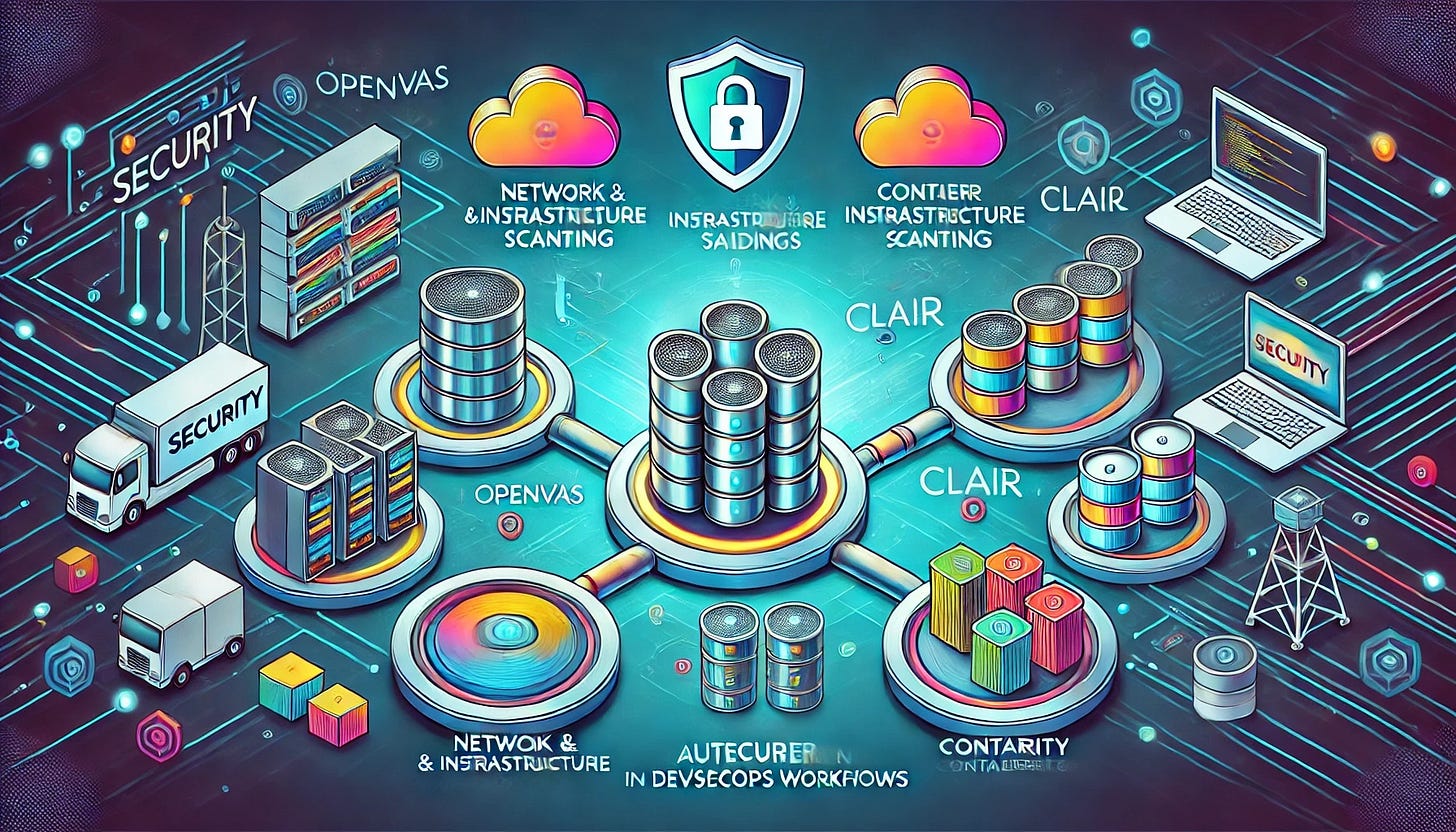Automated Security Audits with OpenVAS and Clair
In today’s DevSecOps-driven workflows, ensuring security at every stage of the software development lifecycle is critical. Vulnerabilities in infrastructure or containerized applications can lead to devastating breaches, making proactive security measures essential. Automated security audits play a pivotal role in identifying and addressing vulnerabilities before they become exploitable.
OpenVAS and Clair are two tools that can help you achieve this goal. OpenVAS is a versatile and robust vulnerability scanner designed for assessing networks, hosts, and systems, while Clair specializes in scanning container images to detect vulnerabilities in Docker layers. When integrated into a CI/CD pipeline, these tools can automate security scans, ensuring that every code deployment and infrastructure change meets rigorous security standards.
What is OpenVAS?
OpenVAS, which stands for Open Vulnerability Assessment Scanner, is a comprehensive and powerful tool designed to assess the security of networks, hosts, and infrastructure. Originally developed as part of the Greenbone Vulnerability Management (GVM) suite, OpenVAS is widely recognized for its extensive vulnerability database and support for various scan configurations. It can detect a wide range of vulnerabilities, including misconfigurations, outdated software, and unpatched services. OpenVAS is ideal for organizations that need to conduct regular scans of their infrastructure to maintain compliance, identify risks, and prioritize remediation.
The strength of OpenVAS lies in its ability to perform authenticated scans, enabling a deeper analysis of system vulnerabilities by accessing credentials. This makes it highly effective in detecting issues that would not be visible through unauthenticated scans. OpenVAS supports scheduling and automation, making it suitable for integration into larger security workflows.
What is Clair?
Clair, developed by CoreOS (and now maintained by Red Hat), is a specialized tool for container security. It focuses on scanning container images to identify vulnerabilities in their underlying layers. Clair analyzes the software packages in each layer of a Docker image and cross-references them against publicly available vulnerability databases, such as the Common Vulnerabilities and Exposures (CVE) list.
Unlike OpenVAS, which is tailored for scanning infrastructure, Clair excels in ensuring the security of containerized applications. With the widespread adoption of containers in modern development practices, tools like Clair are essential for maintaining secure container images before they are deployed to production. Clair integrates well with CI/CD pipelines, allowing teams to automate container scanning as part of their build and deployment processes.
Differences and Use Cases
While both OpenVAS and Clair focus on vulnerability detection, their areas of application differ significantly:
OpenVAS is suited for network and infrastructure scanning. It provides a comprehensive view of vulnerabilities across servers, endpoints, and connected devices.
Clair is designed for container image scanning. It ensures the security of containerized applications by analyzing Docker image layers for vulnerabilities.
By combining these tools, organizations can achieve end-to-end vulnerability management. OpenVAS addresses risks in infrastructure and networks, while Clair ensures that containerized applications are secure from the moment they are built.
Why Automate Security Scans?
In fast-paced development environments, manual security audits are no longer practical. Automating security scans with tools like OpenVAS and Clair ensures that vulnerabilities are identified and addressed early in the development lifecycle. This proactive approach reduces the risk of deploying insecure code or infrastructure, minimizes downtime, and improves overall security posture. Integrating these tools into CI/CD pipelines makes security an ongoing process, aligned with the principles of DevSecOps.
With this foundation in place, the following sections will guide you through setting up and configuring OpenVAS and Clair, integrating them into your CI/CD pipelines, and implementing best practices for automated security audits.


